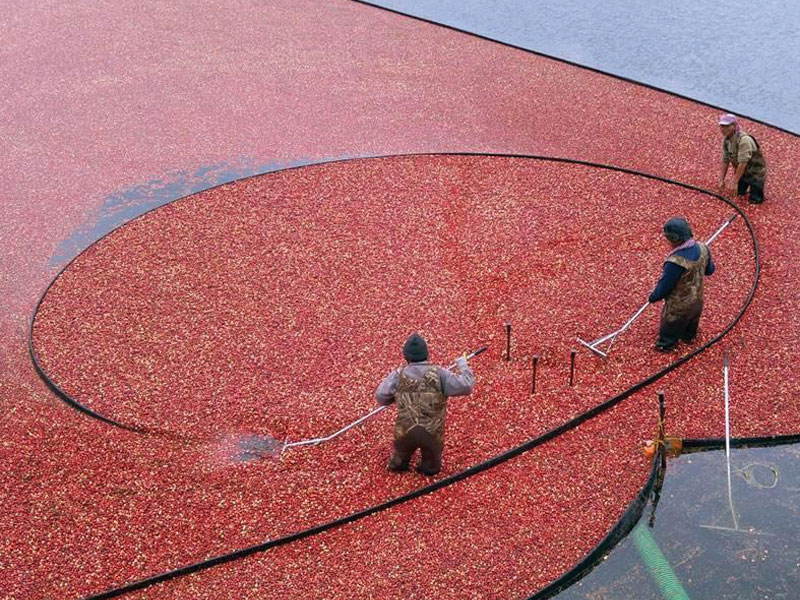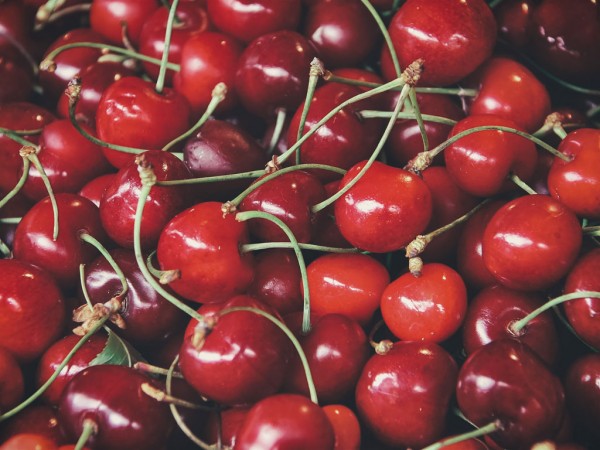Although only in early stages, the tit-for-tat exchange of retaliatory tariffs is setting up a food fight of epic proportions that will impact businesses large and small around the globe.
Global Food Fight
While the U.S. duties largely targeted industrial and electrical goods, China’s retaliatory tariffs were aimed at commodities exported from States that had supported Trumps election - many of these targeted commodities were agricultural goods like soybeans and wheat but many more were perishables, such as fruits, vegetables, meats and seafood. In recent years, perishables have been a bright spot in the U.S.-China trade. For example, the U.S. ranks third among fruit exporters to China. In 2017 the U.S. exported $7.7 billion worth of produce to China, a 33% bump over 2016. U.S. Beef sales are also on the upswing, (or was before 6/7/18) following the lifting of a 13-year ban on U.S. imports.
Of course, this trade spat isn’t just between the U.S. and China. There also is friction between the U.S. and Japan and South Korea. Not to feel left out, the U.S is also engaged in trade disputes with NAFTA partners Mexico and Canada, as the agreement itself is being re-negotiated.
While the big-ticket items like autos and electronics gathered the ink, a real squeeze is choking the complex global perishable supply chain. Unlike capital goods, perishables are just that – perishable – and are volatile commodities whose pricing is dictated by factors that change like the weather.
Although only in early stages, the tit-for-tat exchange of retaliatory tariffs is setting up a global food fight of epic proportions that will impact businesses large and small.
Cranberry red…
The tart little red cranberry is symptomatic of the complexities of a tariff war.
The first production of cranberries came from small bogs (cranberries are grown in sand and wet harvested in water) located in Southeastern Massachusetts (Plymouth, Bristol and Barnstable counties). Later production expanded to other New England states and eventually spread throughout the Northeast. Eventually states like Wisconsin began growing cranberries on large scale farms eclipsing traditional production. In fact, cranberry farming became so successful in Wisconsin, the berry became the State fruit. Wisconsin, home to House Speaker R-Congressman Paul Ryan, accounts for around 60% of the total U.S. crop with international markets tallying 30% of the harvest.

Around 95 million pounds of cranberries are annually exported to Europe, a majority coming from Wisconsin. Naturally being an export commodity from House Speaker Ryan’s home state, the EU decided to put cranberries (along with Wisconsin based-Harley Davidson’s motorcycles) on the list of commodities singled out for retaliatory tariffs.
This made cranberry exports from Massachusetts – a decidedly blue state – collateral damage in the Trump Administration’s rapidly expanding trade war.
Massachusetts’ D-Congressman William Keating, whose district encompasses the main cranberry growing counties in the state, began his own version of berry diplomacy engaging with the EU to remove the cranberry from the targeted list. Congressman Keating’s negotiations resulted in the exclusion of approximately two-thirds of the cranberry products from the tariff list, including prepared and preserved cranberry products. However, the EU tariff still applies to cranberry juice. The deal also includes a three-year time period, and if nothing has changed within the time period, the cranberry will again be on the tariff list.
Congressman Keating in a WGBH radio interview said he thought the cranberry negotiations were “a long shot” and explained, “You had to have 28 countries agree…It was a hard lift.”
Why the EU agreed to give a little on cranberries probably has more to do with Massachusetts voting record than the economic impact of the cranberry on the EU or the U.S. But it illustrates just how political even a cranberry can become under extraordinary circumstances.
Of course, Congressman Keating’s efforts don’t apply to Canada, which accounts for around 7% of the exports or Mexico, a new market and more importantly China.
In the case of Mexico, Keating may well find himself again negotiating on behalf of the cranberry. With the U.S. tariff announcements of July 6th, Mexico responded with retaliatory tariffs of between 15%-25% largely targeting agricultural goods, including apples, cheeses, potatoes, pork, whiskey… and cranberries, Massachusetts’ favorite crop. The tariffs worth $3 billion are in response to steel and aluminum duties the Trump administration announced earlier this year.
China Cherry Picks
China, like the EU, has cherry picked a list of products to apply retaliatory tariffs, and perishables figure prominently. Take cherries for example. China is the third largest export market for U.S. fresh cherries. In 2017, the U.S. exported $119 million worth of fresh cherries to China, considerably less than $605 million worth in 2016. Contributing to the decline in cherry (and strawberry) exports to China was the 15% tariff from the previous round.

In the case of cherries, the Pacific Northwest accounts for 8% of the production and 83.5% of the exports. According to statistics from the Northwest Horticultural Council, 35.2% of last year’s Pacific Northwest sweet cherry crop of 26,432,194 boxes (approximately 20 lbs. apiece) was exported. The value of the cherry exports was $400 million in 2017. (see chart)
As of 2017, China’s still the largest export market at almost 3 million cases, although Canada is very close at 2.72 million cases. However, with the imposition of tariffs, a shift in both destinations and sourcing is likely to occur. In the case of cherries, with China canceling orders, farmers are likely to look to the market to absorb the missing exports. The problem for the growers is a lack of refrigerated warehousing to accommodate the “extra” cherries.
And it’s not just cherries looking for a home.
The U.S. exported $872 million worth of apples in 2017, with China buying $44 million of that total. Back in April, US Apple Secretary Jeff Colombini representing his trade group hit on both the trade disputes with China and NAFTA and the impact on apple exports. Colombini remarked, “NAFTA is critical to the economic health of both the California and U.S. apple industries. Under the agreement, the apple industry has quadrupled its exports to Mexico and doubled its exports to Canada with combined purchases of nearly $450 million per year. It is worth noting that prior to NAFTA, Mexico had a 20% tariff on U.S. apple imports. Since the tariff was removed, Mexico is the U.S. apple industry’s largest export market. Colombini also said of the China trade dispute, “This is a tremendous concern as China has significant growth potential because it doesn’t grow the many apple varieties we grow and Chinese consumers are excited to experience those unique taste profiles… The retaliatory tariffs imposed by China will hurt apple growers’ ability to maintain and expand this emerging market.”

Market Futures
Of course, it isn’t just the growers who are getting squeezed by the tariff battle. All the processors, such as juice makers, will also suffer. The real question is what will the industry do to avoid being caught as collateral damage in the trade disputes?
For agribusiness, the obvious answer is to shift production. Thus, will other sources of perishables like Chile ($10.3 billion in exports), Peru ($2.2 billion in exports), Ecuador ($2.2 billion in exports) Mexico or increased production in China itself arise to avoid tariffs? How about Vietnam ($12 billion in exports), or Thailand ($7 billion in exports), which already are major fruit and produce exporters to China. Take Australia and New Zealand which shipped $3.4 billion and $3 billion in perishables to China last year – will their exports to China boom. And there are other contenders like South Africa – or in fact a number of African nations could become bigger suppliers.
And should the Trump’s tariff war go on too long, will U.S. growers be able to re-establish their brands in foreign markets?





